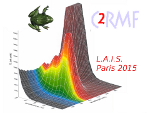Meteorite falls have attracted the attention of scientists earlier than the mid of the 20th century and have been the object of extensive studies up to present. Earlier studies have focused on the composition of the meteorites, but the most widely investigated feature of these materials has been their Thermoluminescence (TL) behaviour. The majority of the published works has been focussed on the natural TL of meteorites, which informs on the extent of the stored charges in the traps and thereby the absorbed dose and ambient temperature. The above can be used to gain an insight into their terrestrial age, orbits and thermal and irradiation history linked to extra-terrestrial exposure. In the same respect, laboratory induced TL of meteorites has also been studied to produce information regarding their mineralogy and crystallography, which can provide further information on the degree of metamorphism, post-metamorphic cooling history, shock and regolith history (Lal 1969; Sears et al. 2013).
In the present study an integrated approach towards the detailed characterization and investigation of the dosimetric properties of two meteorites is attempted combining several advanced techniques. The scope of the work is to enrich our knowledge on the luminescence behaviour of these materials and to test their potentiality to serve as space-probes and dosimeters. The ultimate goal would be to identify equivalent earth materials with similar properties that would allow the implicit study of meteorites and/or other extra-terrestrial materials without the need of their physical presence in the lab. The latter would permit the complete characterization of such rare materials towards the better understanding of space cosmic ray and/or the age of planetary materials.
The bodies and the inclusions of the meteorites were stereoscopically analysed by means of a high-performance stereoscopic microscope to gain an insight into their structure. In addition, their chemical composition was also determined, using non-destructive multi-elemental micro X-Ray Fluorescence Spectroscopy. Finally, their major dosimetric properties (e.g. sensitization, dose response) were also studied by means of TL.
Preliminary results indicate the complexity of the structure and composition of the meteorites (Fig. 1a) due to the existence of various crystal-like inclusions. It is the synergy of the above that contribute to the acquired glow curves during the TL measurements (Fig. 1b) which seem to witness the presence of deep and stable traps in both meteorites studied ascribing very interesting and worth studying dosimetric properties.
(a)
(b)
Figure 1: Norton County meteorite: (a) Stereoscopic photomicrograph, (b) TL glow curves.
References
Lal, D. (1969) Recent advances in the study of fossil tracks in meteorites due to heavy nuclei of the cosmic radiation. Space Science Reviews, 9(5), 623-650.
Sears, D.W.G., Ninagawa, K. and Singhvi, A.K. (2013) Luminescence studies of extraterrestrial materials: Insights into their recent radiation and thermal histories and into their metamorphic history. Chemie der Erde, 73, 1-37.
- Other
- Picture

 PDF version
PDF version
